Modern Rodding TECH
InTheGarageMedia.com
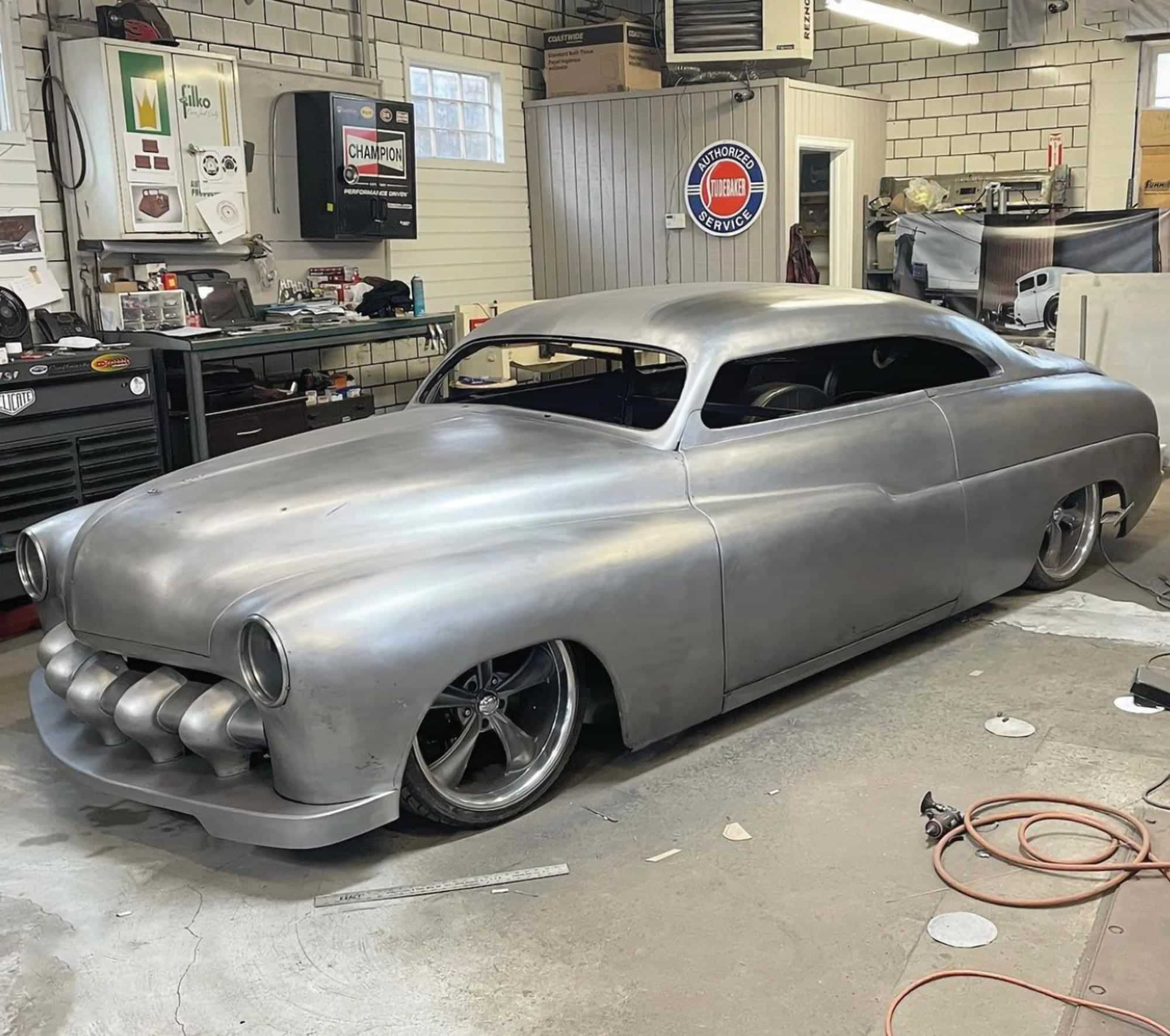

This Full-Custom ’50 Merc Leaves Us Green With Envy
 Photography by E.J. Talik
Photography by E.J. Talikike Green has many interests in life; now that he is retired, he has time to pursue two of his favorites: early customs and baseball. His garage currently holds a ’50 Merc Fordor, and while he has enjoyed this early custom, he always wanted a Tudor version of the classic custom. He is also the assistant coach for the Fairview High School varsity baseball team in his hometown of Fairview, Pennsylvania.
With visions of timeless customs rolling in his head he turned to Tavis Highlander to collaborate on the design of a ’50 Mercury Tudor. In Mike’s words: “I wanted to build a custom with some features no one has seen before, while still paying homage to all the things that have been done by all the talented customizers from generations of years past.” Armed with Highlander illustrations the build began.
In the summer of 2020, Mike located an old, chopped Merc, a car with a nice profile but in dire need of repair. Northeastern weather had taken its toll and while the early chop had a nice profile it would require a lot of work. Enter E.J. Talik and his shop Craftworks Fabrication, located in Coraopolis, Pennsylvania. Like many great customs, the end design would come from the collaboration of the owner, the designer, and the fabricator. With input from these three hot rodders, one unique ’50 Mercury custom was born. In the end it would be Talik’s responsibility to turn visions and renderings into reality.
Once in the shop, Talik took inventory of the old custom. It would require a completely new floor and the lower sheetmetal around the entire car would be replaced. Since patch panels and reproduction sheetmetal are not available for a ’50 Mercury, all the metal would need to be fabricated. We mentioned the old, chopped Merc had a pleasant profile with a properly laid-down rear window, and while we try avoiding criticizing early hot rod work, suffice it to say the metalwork on the roof was not nearly up to Craftworks’ standards. The entire roof would be reskinned and in the process the car was converted to a hardtop. Talik decided the original chop (approximately 4 inches) was fine, as he knew the conversion to a hardtop and reconfiguring the quarter-window openings would visually lower the roof line.
So, roof repair, lower body rust repair, and a new floor were first on the list. Things like filling all the trim holes, frenching the headlights, forming a new grille opening, and filling it with two modified ’51 Ford F-1 grilles came later. The grille makes a bold statement, think ’53 DeSoto on steroids. The completely reworked decklid now fits flush between the quarter-panels, rather than on top of them. The decklid work is not shown in our photos, but we did get a sneak peek and the metalwork is amazing.
This reshaped body will roll on a Roadster Shop chassis with custom air-ride suspension. Merc customs from years past were often referred to as “leadsleds,” in reference to the soft metal filler of the day. They were also not known to be particularly fast. All that has changed with the modern Merc. There will be minimal filler and maximum horsepower for this custom. Power comes from a 302-inch, Gen II Coyote Ford engine pumping out an estimated 700 hp. A Ford 6R80 tranny passes the power back to a Currie 9-inch rear.
We mention this only because, for the most part, it will all be covered with some of the finest metalwork found anywhere. The custom floorpan features a beautifully formed tunnel, bead rolled floor panels, and a firewall featuring formed recesses. When building a custom car, the floor is a structural part of the body. It is imperative that the floor be strong enough to hold the shape of the body. So, all those handsome beads rolled in floorpans look great, but they also add structural integrity to the floor. Another unique feature of the floor structure is the subframe that Talik fabricated under the floor panels. This subframe follows the contour of the Roadster Shop chassis and provides a strong mounting structure for the floor sheetmetal and for the body mount bolts attaching the body to the chassis.
We will bring you a full feature on the Mike Green Merc upon its completion, but we wanted to give you an inside look at what goes into building a car of this caliber. Much of this beautiful work will be covered when the car is complete, and with the low stance seeing it from below will be difficult, at best.
A project of this magnitude takes years to complete and Team Green is hoping for completion next year (Summer 2023). There are still many things to fabricate and solutions to be found, ranging from the dashboard to making those hardtop quarter-windows work. Many decisions will be made along the way as cars begin “to talk to you” as the modifications accumulate. We can’t wait to see the finished product, and while the final color has yet to be chosen, Green did mention the color of bare metal sure shows the lines nicely.
One thing is certain, Green has stepped up to the plate for this build and while we are only approaching the seventh inning stretch, we feel certain, upon completion, this Merc is going to knock it out of the park.
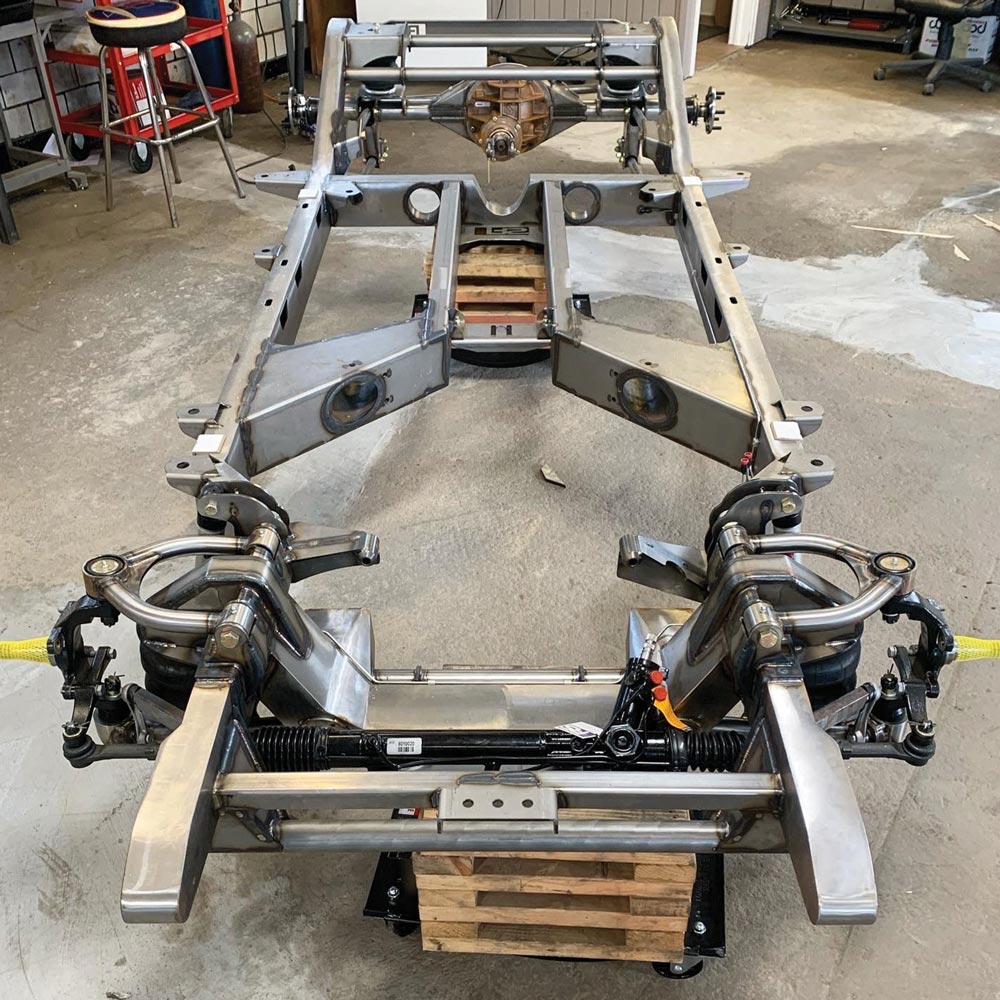


4. The original floorpan suffered from rust issues and those wheeltubs are not nearly large enough to house Schott 20×11 wheels. Removing the original floor exposes the Roadster Shop parallel four-link suspended, 9-inch rear, and Ridetech airbags.
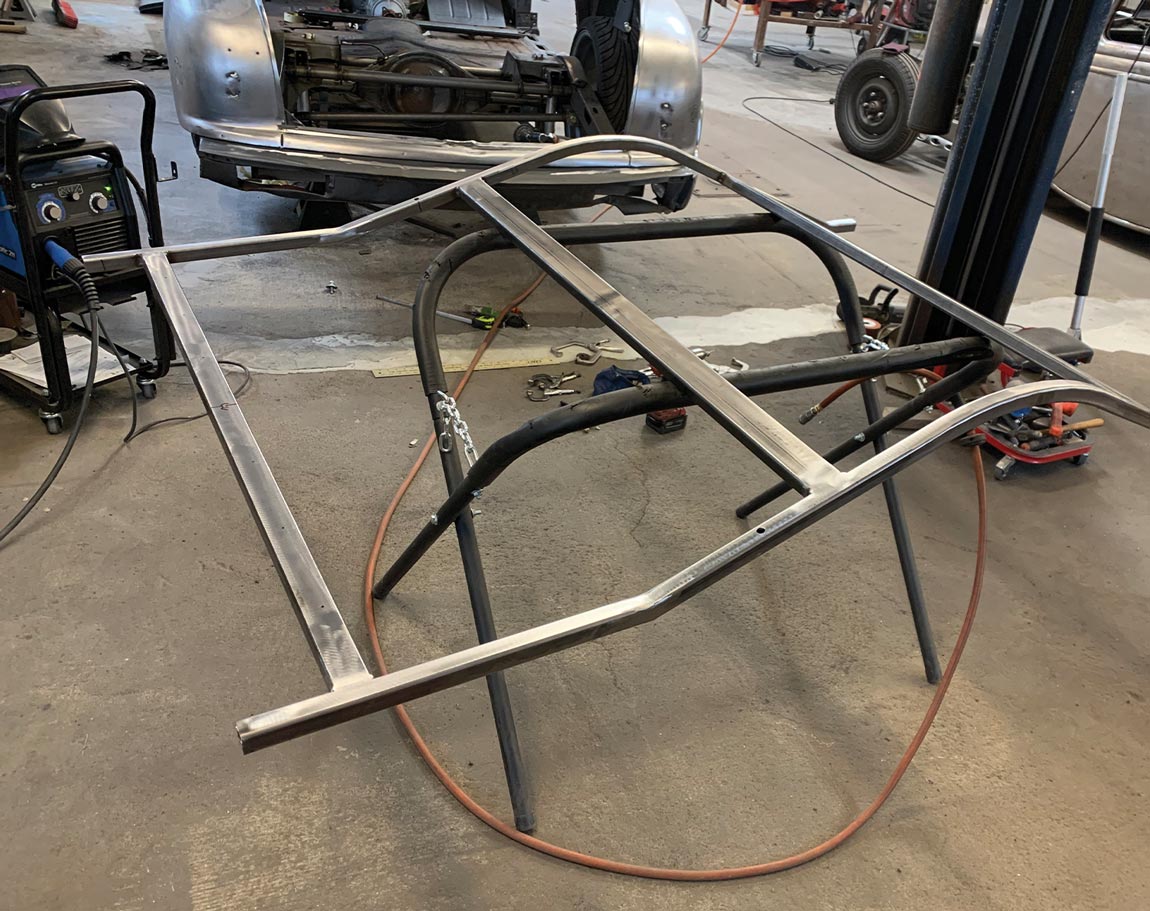

6. Here we see the floor subframe test-fit to the Roadster Shop chassis. The bolts are going to the original body mount locations. This subframe will be welded to the floor, thereby becoming part of the body.
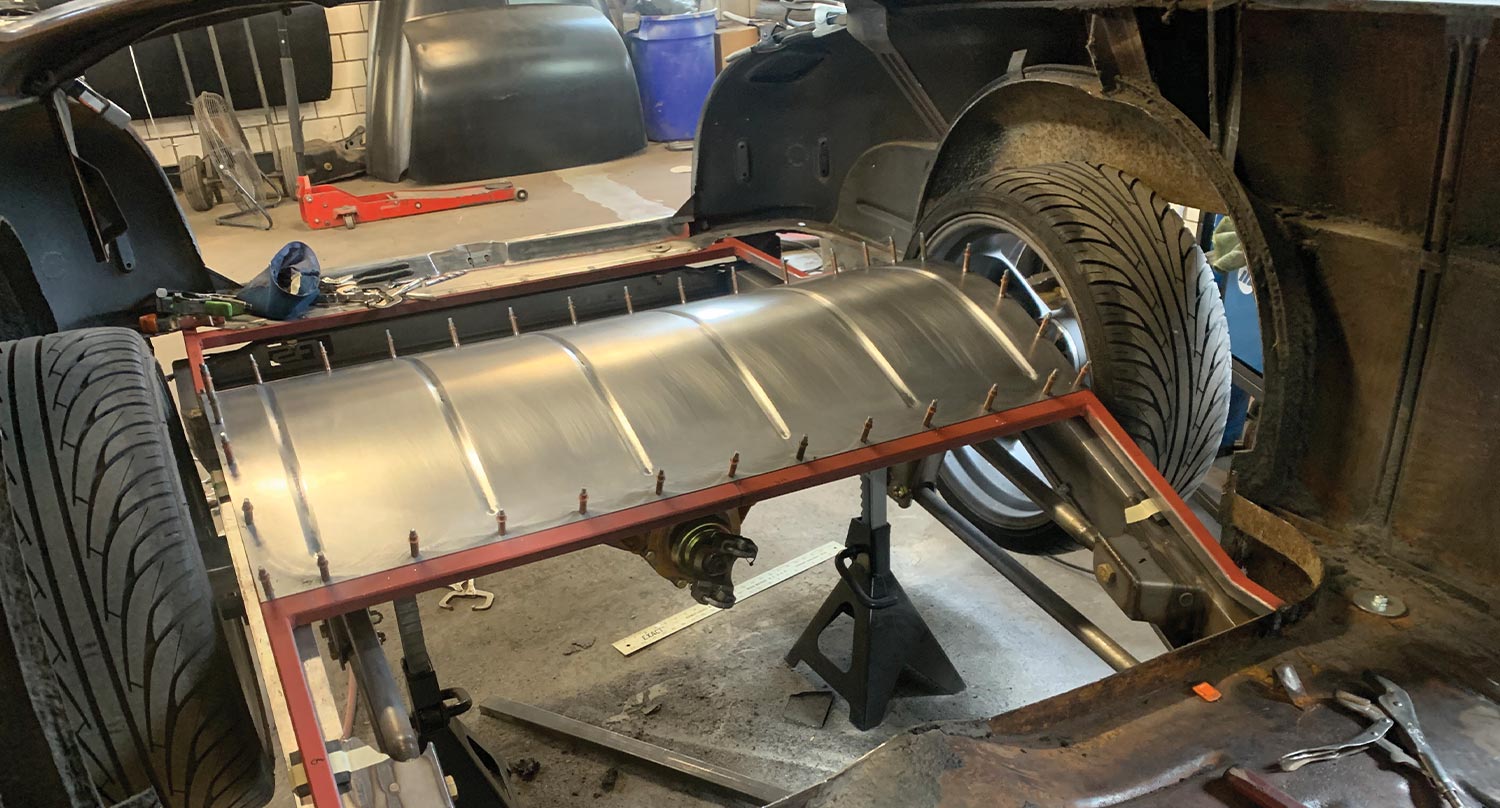
7. E.J. Talik began the fabrication by forming the piece that goes over the rear axle housing. The subframe provides attaching points for the 18-gauge, bead-rolled floor panel. Cleco fasteners hold the panels in place prior to welding. Note the original wheeltubs have been cut out.
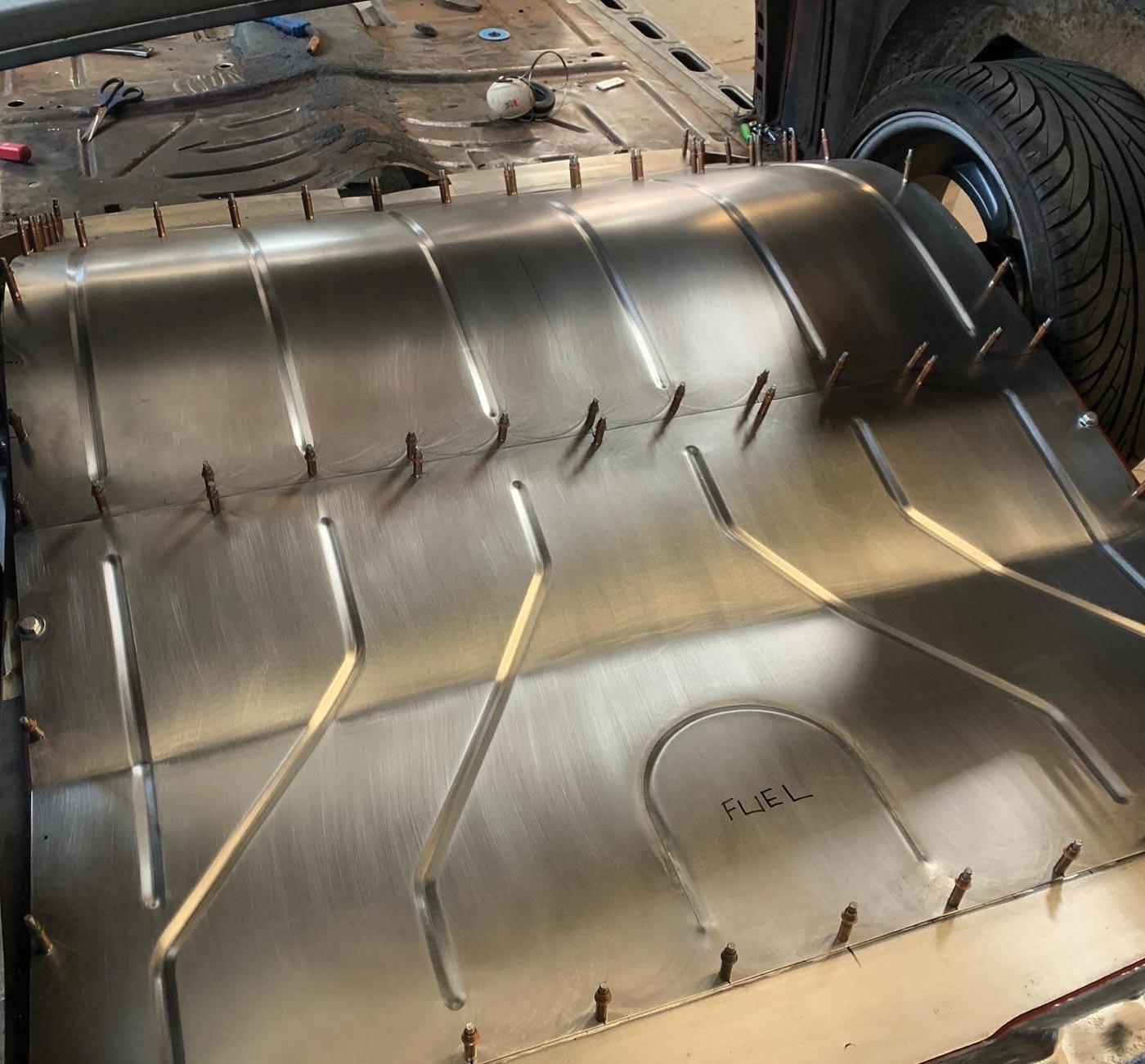
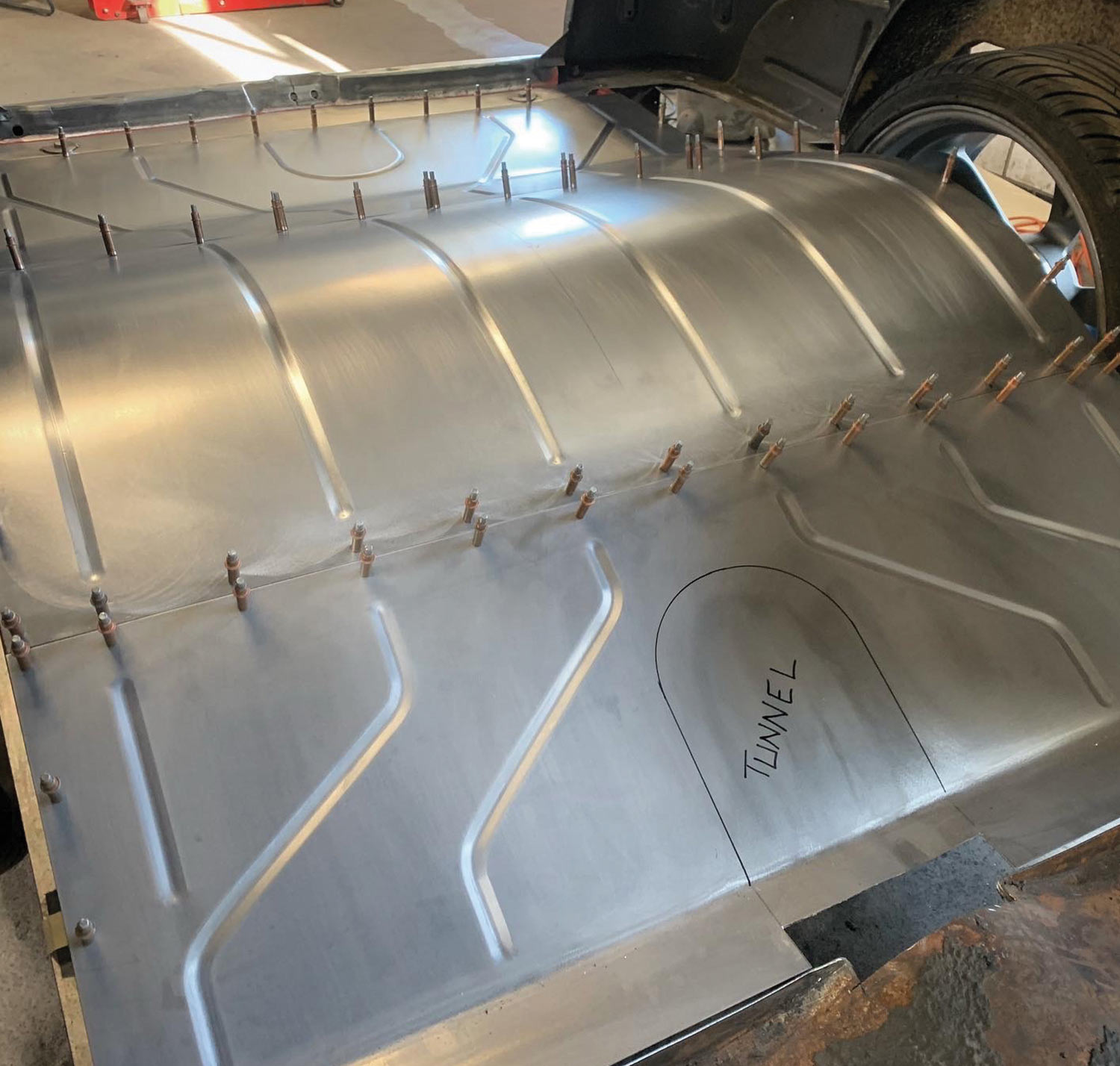
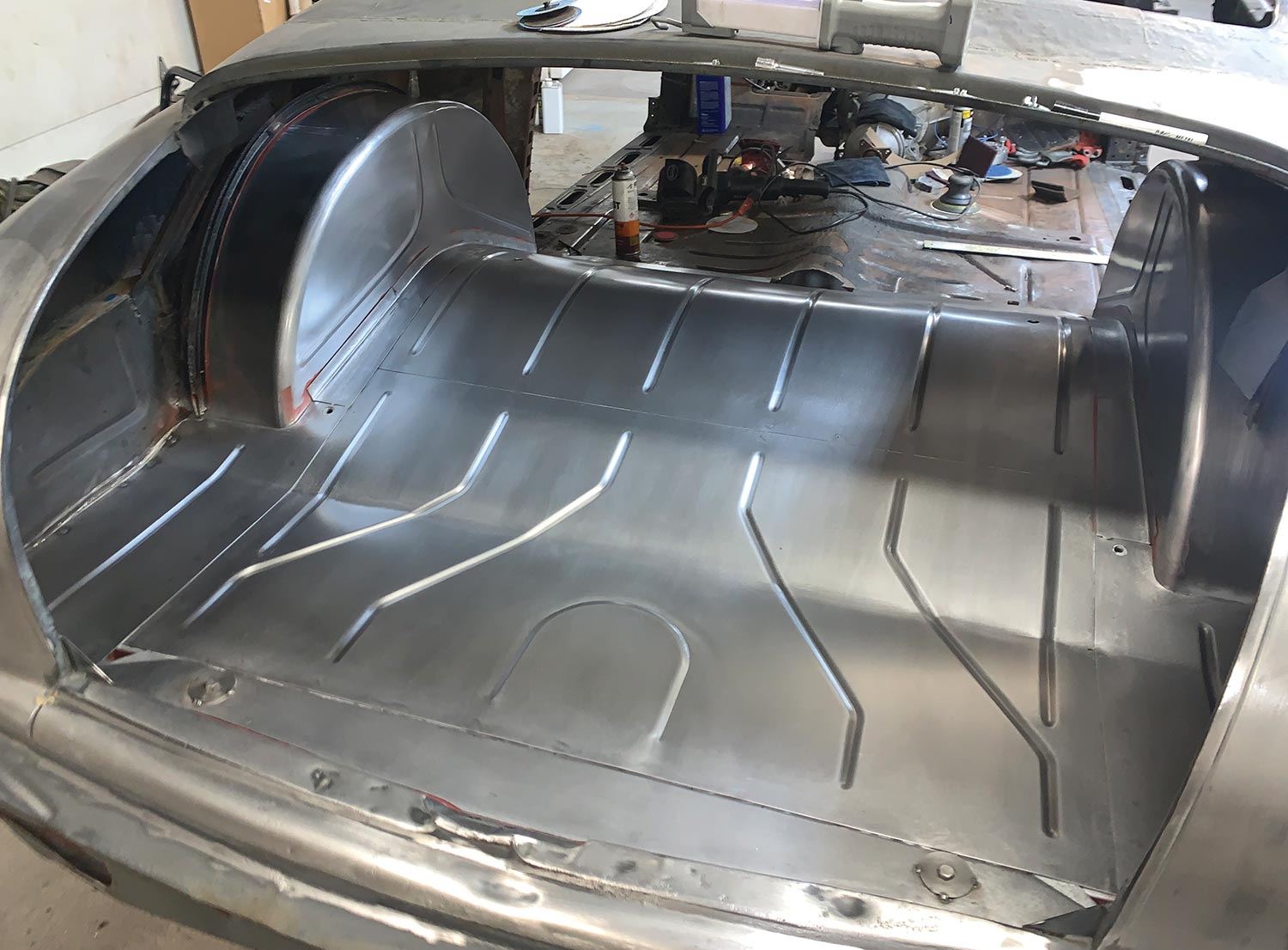
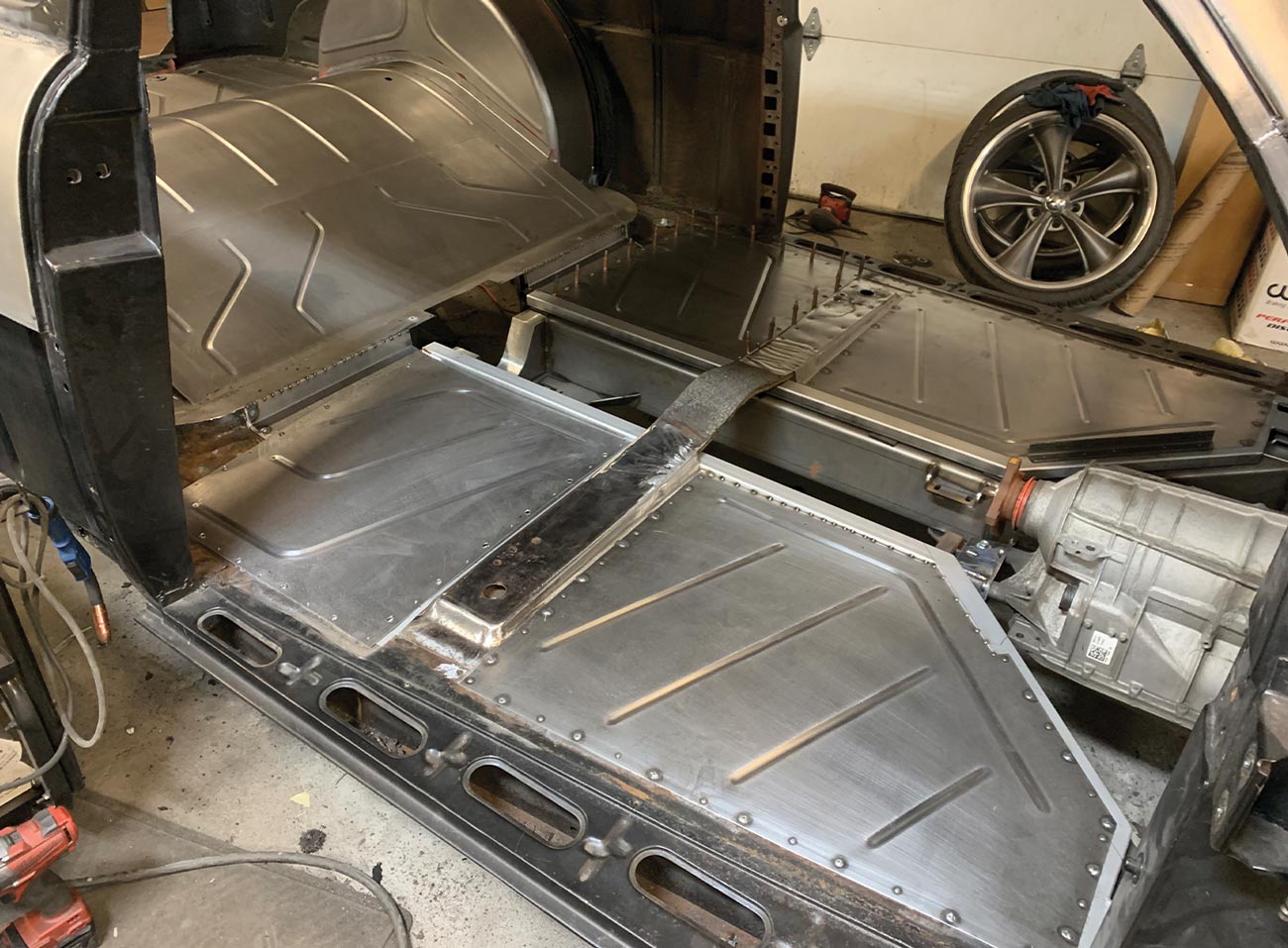
11. A similar box tubing subframe was made to support the floor on both sides of the X-member. Once again, ease of panel attachment and body rigidity are enhanced with this method. Four beaded panels form the floor while the original seat mount remains.
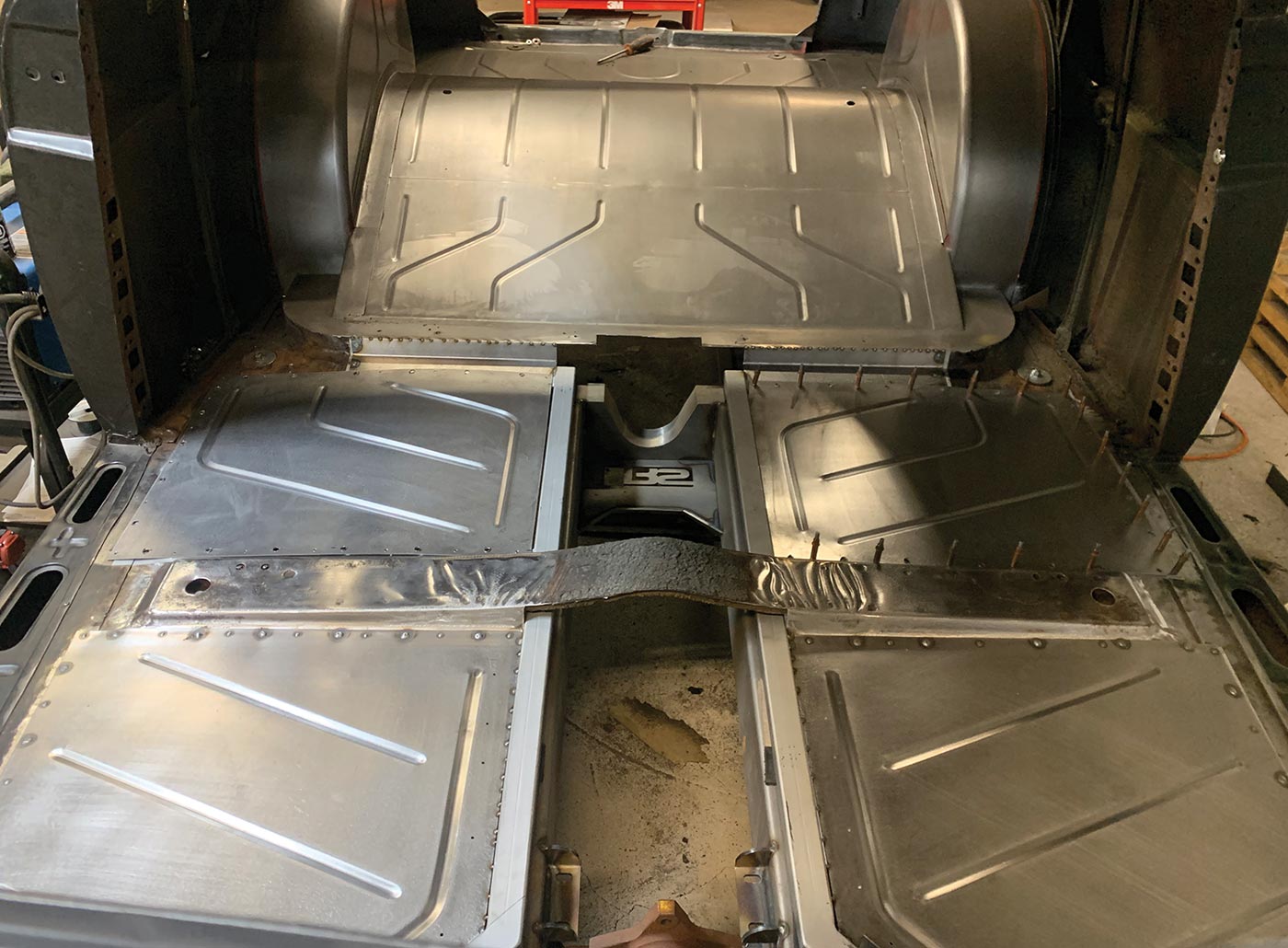
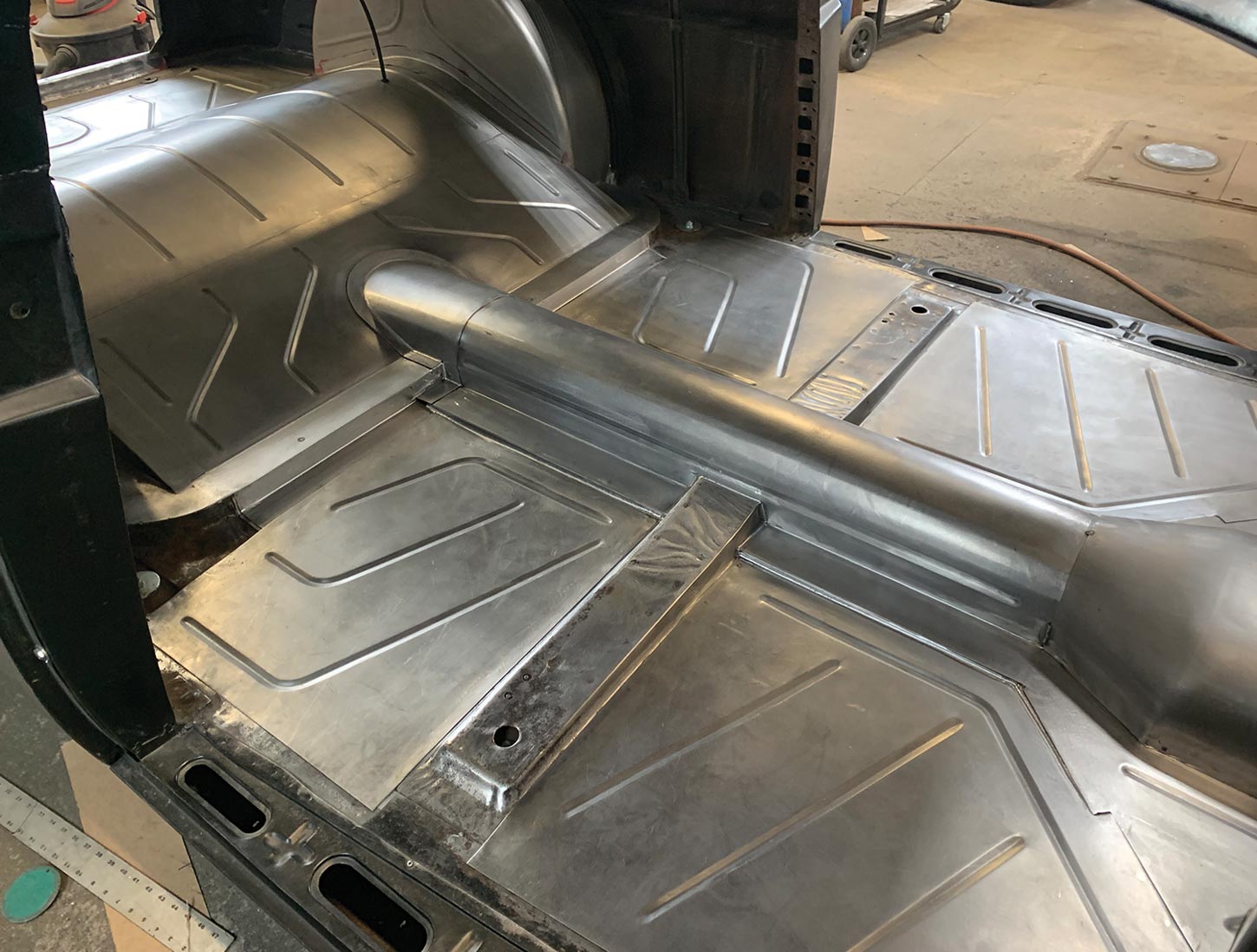

14. After fabricating a new firewall, the transmission hump connects the firewall to the driveshaft tunnel. Note the access panel in the bellhousing area.
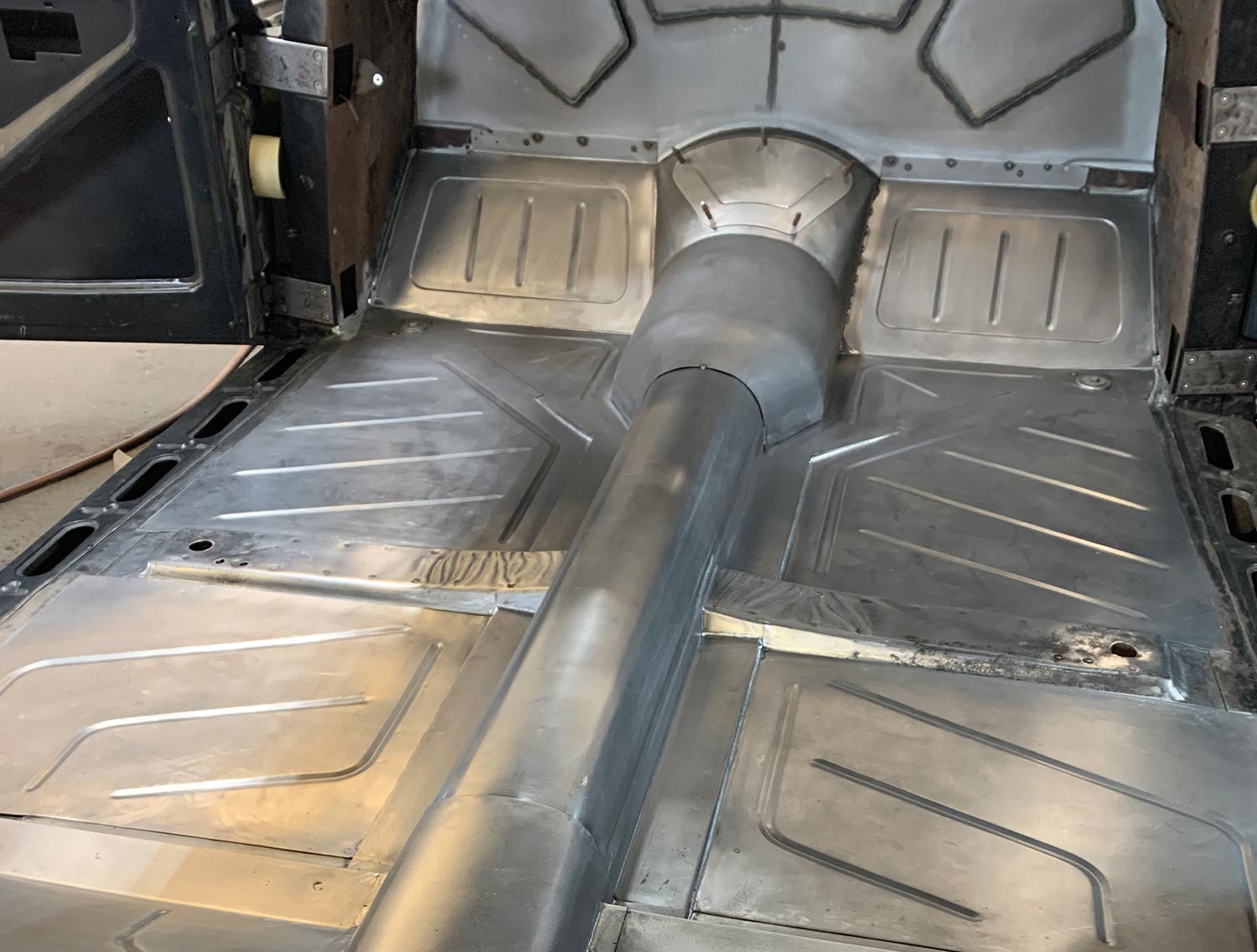

16. In the back seat area the strong brace for the package shelf is in place along with the mounts for the air tank for the Ridetech suspension. Note the inner body panels with access for window regulators. Yes, this hardtop will have functioning quarter-windows.
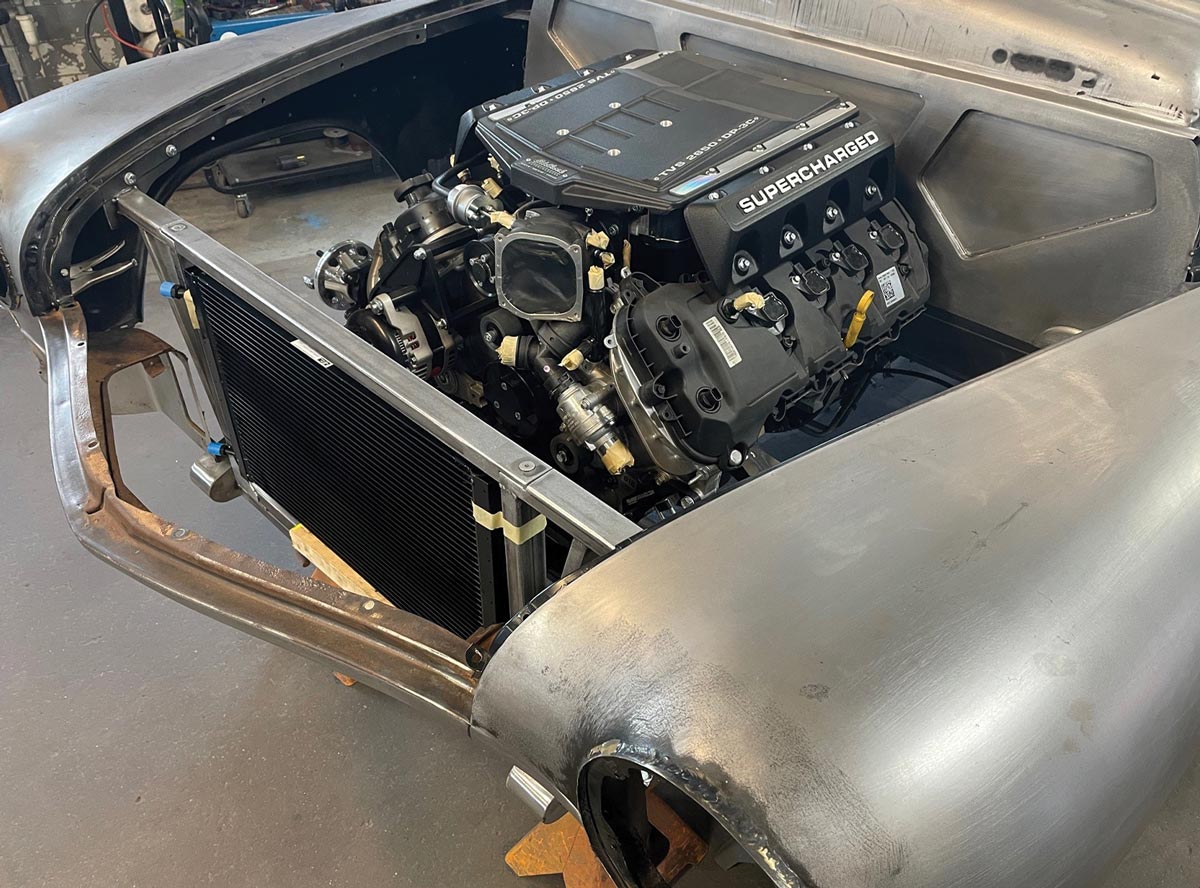
17. Sitting behind the custom-fabricated core support and the Performance Rod & Custom radiator and in front of the custom firewall is a Gen II Coyote engine displacing 302 inches and pumping more than 2 hp per inch.
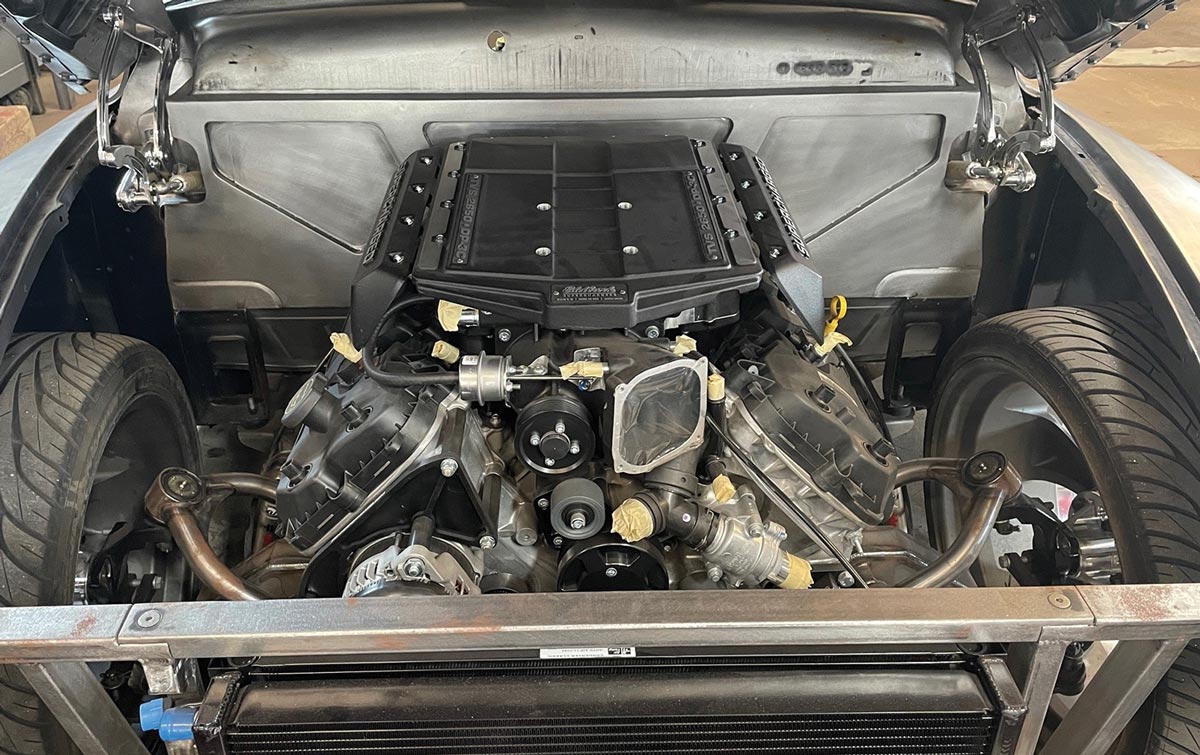
18. Test-fitting the front sheetmetal and mounting the hood using a set of modified Billet Specialties ’55 Chevy hood hinges provides an engine bay just big enough for that Coyote. There will be extensive sheetmetal work under the hood to house the front suspension and wheels.
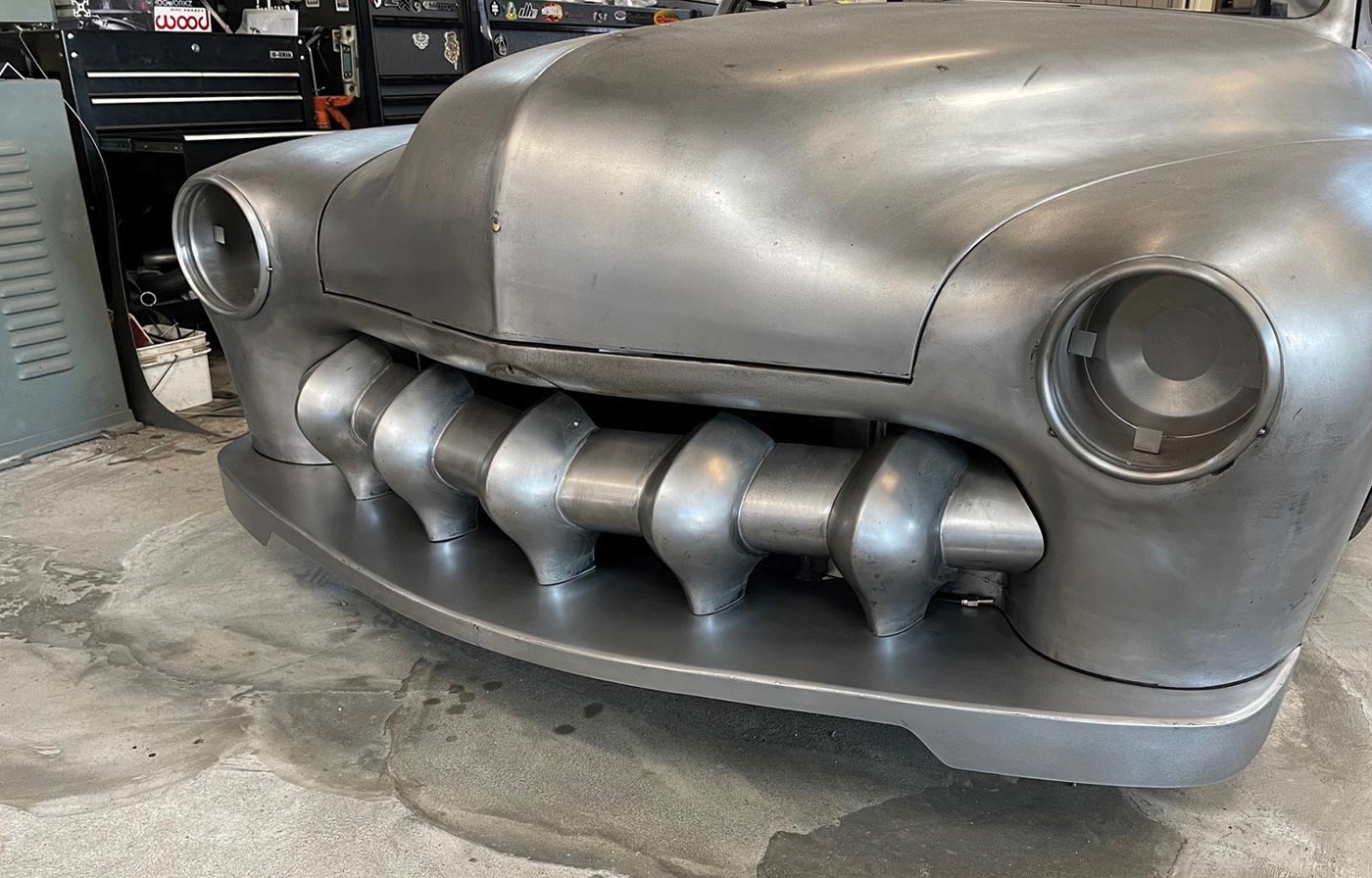
19. OK, we absolutely love this grille. With distinctive early DeSoto-like flavor, it is formed from two ’51 Ford F-1 truck grilles. The results are one very bold, early custom statement. The front fenders have been extended down 1-1/2 inches and the grille pan is handformed.
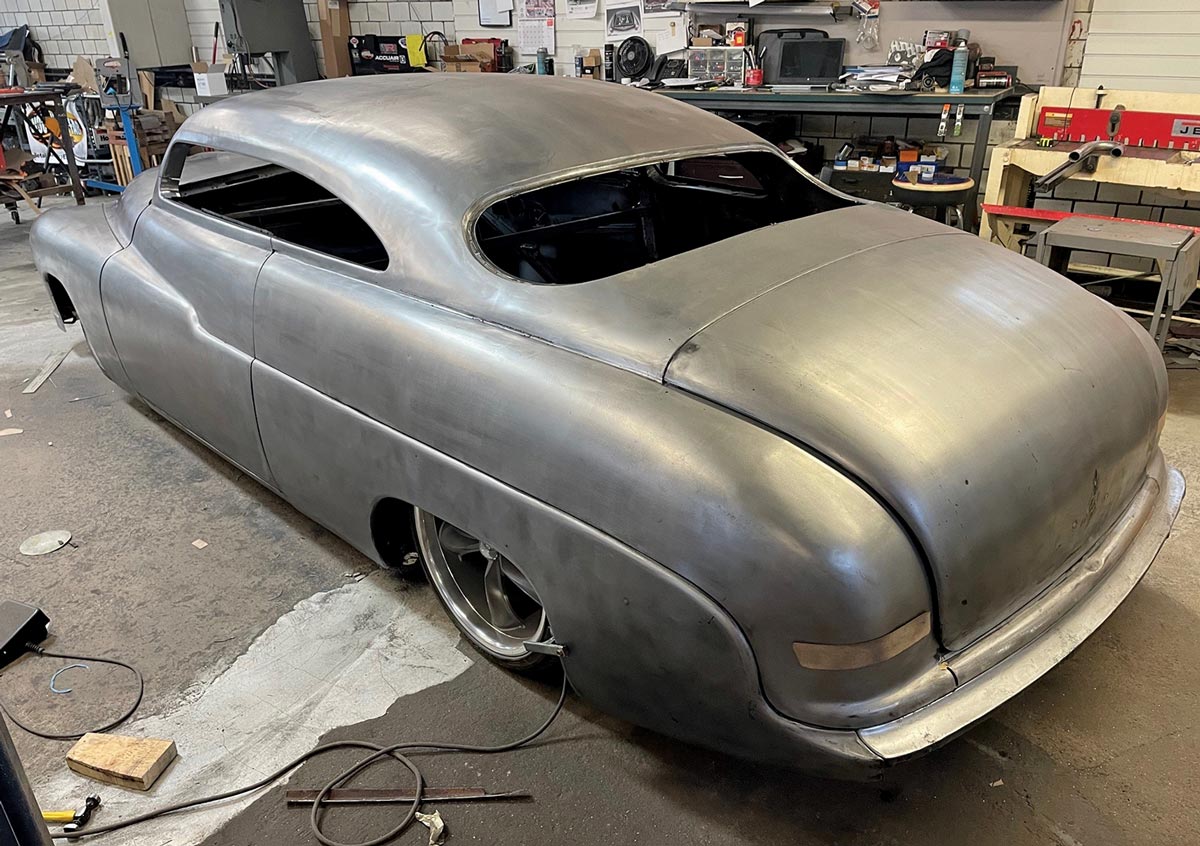

VOLUME 3 • ISSUE 26 • 2022